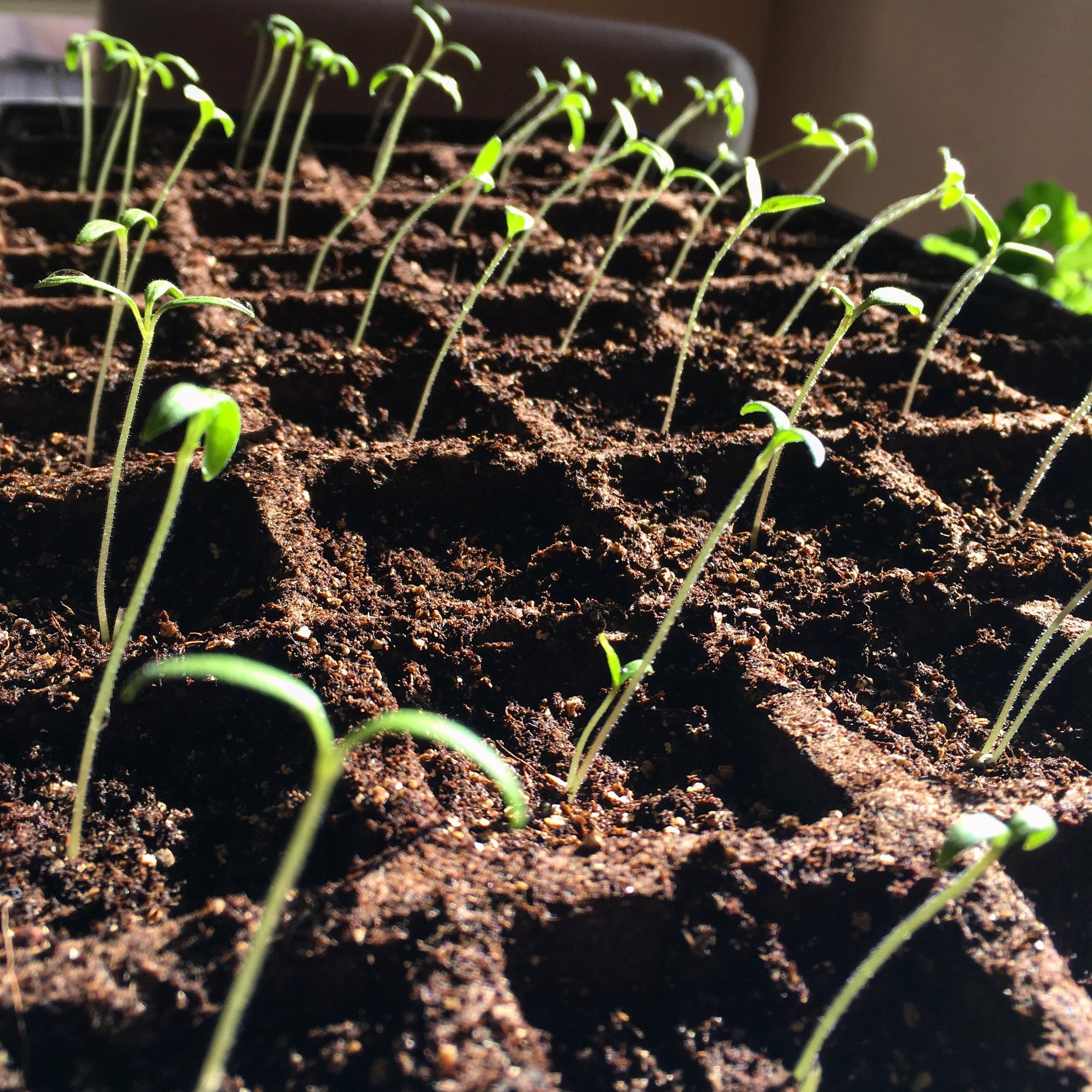How to Start Tomato Seeds Indoors
It’s mid-February and for those of us high-altitude growers, it’s tomato seed starting time (and peppers!)! In this post are a few things to keep in mind for the best chance of success with starting your tomato seeds indoors.
If you want the option to save your tomato seeds later in the season, before starting, be sure that you plant open-pollinated tomato varieties. There are no hard and fast rules about what sort of container to start your seeds in as long as the receptacle is non-toxic and has good drainage. Anything from formal seed starting trays, to egg cartons, to spare cups are a-okay. The ideal soil for seed starting is loose, light, fine textured, and doesn’t hold onto too much water - i.e. it drains effectively. You don’t want the soil to compact down too intensely when you press into it. There should be a little spring back as you poke it. I sound like Paul Hollywood with his bread. The tomato seeds will need that oxygen along with darkness, warmth, and moisture to work their magic.
I like to pre-wet my soil before putting it into my trays and certainly before planting my seeds. There are so many seed starting soils out there that are super hydrophobic and if that soil has not had a chance to absorb water, the water will just sit on top forever and even wash your seeds away as you pour. I mix mine in a bucket until it is evenly wet. When I squeeze a fist-full, I am looking for it to gently hold its shape and maybe a couple drops of water to come out. I’m not looking for totally saturated, soggy mud.
Tomato seeds don’t need to be planted too deeply. If they are too deep they can end up dying before they break the soil surface. A general rule of thumb is to plant seeds at a depth that is two to three times their width. Cover with a top sprinkling of soil and then a misting of water. You can cover them with newspaper, a plastic lid, or nothing at all. The ideal temperature for tomato seed germination is between 65 and 85 degrees fahrenheit. Any cooler and you are looking at a significantly extended germination time and any hotter and you may not get germination at all. The most common mistakes I see from folks who aren’t getting their seeds to germinate are fluctuating temperatures (particularly in the low range) and seeds planted too deeply. Some varieties do take longer than others to germinate. Be patient, don’t give up on them! Typically you’ll see them sprout within a week, but if they still haven’t come up, keep them moist and don’t get too discouraged!
Once your seeds have sprouted, give them ample access to light. Grow lights are not necessary but they will significantly help with leggy plants. Set the lights nice and low over your trays and your sprouts will grow thick and sturdy instead of tall, weak, and leggy. I have some photos of my leggy tomato plants below! :) They ultimately did just fine but it’s not ideal. Once your starts have developed their first true sets of leaves, you can up-pot them into a larger container. Plant them right up to their necks. The stems of tomato plants are covered in fine hairs that will turn into root systems.
Have fun and enjoy watching your tomato seeds sprout into hardy, healthy plants. Catch our post coming up later in the season for tips on tomato care once your plants have sprouted and been transplanted into the ground.



